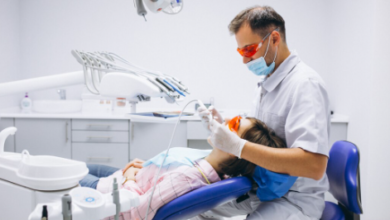How Long to Wait Before Eating on a New Crown

Immediate Post-Procedure Guidelines
So, you’ve just gotten a new crown, and it feels a bit strange, right? That’s totally normal. Your mouth is still getting used to this new addition, and there might be some initial sensitivity. Think of it like breaking in a new pair of shoes – it takes a little time.
Understanding Initial Sensitivity
It’s common to feel a bit of tenderness or even a slight twinge when you bite down or when something cold or hot touches the new crown. This is usually due to the nerves in your tooth reacting to the procedure and the new surface. The sensitivity should lessen over the next few days. If it feels really sharp or doesn’t improve, it’s worth mentioning to your dentist.
The Role of Dental Cement
That new crown is held in place with dental cement. This cement acts like a glue, but it needs a little time to fully set and harden. While it feels solid right away, it’s still a bit vulnerable in the first few hours. The type of cement used can affect how quickly it reaches its maximum strength.
First Sips and Bites
When you first start eating or drinking, take it easy. Stick to cool or lukewarm liquids and very soft foods. Avoid anything too hot, too cold, or too chewy. It’s best to take small bites and chew gently, preferably on the side of your mouth that doesn’t have the new crown, if possible. This helps protect the cement and your tooth while everything settles in.
Factors Influencing Waiting Time
So, you’ve got a shiny new crown, and you’re wondering when you can actually eat normally again. It’s not a one-size-fits-all answer, really. A few things play a part in how long you should hold off.
Type of Dental Cement Used
Dentists use different kinds of cement to stick your crown in place. Some set really fast and get hard almost immediately, while others take a bit longer to reach their full strength. Your dentist will know which type they used and can give you the best advice. It’s like how some glues dry in minutes and others need hours to really bond.
Your Dentist’s Specific Instructions
This is probably the most important part. Always follow what your dentist tells you. They know your specific situation, the type of crown, and the cement they used. They might say wait an hour, or maybe a few hours, or even until the next day. It’s their job to make sure your crown stays put, so their instructions are key.
Individual Healing Responses
Everyone’s body is a little different, right? Some people’s mouths might feel a bit more sensitive after getting a crown, and that can affect how quickly you feel comfortable eating. If your mouth feels tender or sore, it’s probably best to stick to softer foods for a bit longer, even if the cement is fully set. Listen to your body; it’s usually pretty good at telling you what it needs.
Navigating Your First Meal
Choosing Soft Foods
After getting a new crown, your mouth might feel a little strange, and the tooth itself could be sensitive. That’s totally normal. For your first meal, stick to things that are easy to chew and won’t put much pressure on the new crown. Think mashed potatoes, yogurt, scrambled eggs, or a smooth soup. These foods are gentle and less likely to cause any discomfort. It’s all about giving your mouth a chance to get used to the new addition without any fuss.
Avoiding Sticky or Hard Items
This is a big one. You’ll want to steer clear of anything that could potentially dislodge the crown or stick to it. That means no chewy candies, caramel, or even really tough bread crusts. Also, avoid biting down on anything hard, like ice, nuts, or popcorn kernels. These can put a lot of stress on the crown and the cement holding it in place. Patience now will save you a headache later.
Chewing Techniques
When you do start eating, try to chew on the opposite side of your mouth from where the new crown is. If you have crowns on both sides, take smaller bites and chew very carefully. Don’t try to take a huge bite of something tough; that’s just asking for trouble. Gentle, deliberate chewing is the name of the game for the first day or so. It helps protect the crown and lets the cement fully set without being stressed.
Remember, the goal is to protect your new crown while it settles in. Treat it gently, and it will serve you well for a long time.
Long-Term Care for Your New Crown
Taking care of your new crown is pretty straightforward, but there are a few things to keep in mind to make sure it lasts. It’s not just about the initial healing; it’s about the long haul.
Maintaining Oral Hygiene
Brushing and flossing around your new crown is just as important as it is for your natural teeth. You want to get rid of all that plaque and food debris.
- Use a soft-bristled toothbrush. You don’t want anything too stiff that could irritate your gums or scratch the crown.
- Floss daily, making sure to gently slide the floss between the crown and your gum line. Don’t saw back and forth aggressively.
- Consider using a water flosser if regular flossing feels tricky. It can be really effective at cleaning those hard-to-reach spots.
Regular Dental Check-ups with Your Dentist Rancho Bernardo
Don’t skip your regular dental appointments. Your dentist Rancho Bernardo is the best person to check on your crown’s condition. They can spot any potential issues before they become big problems.
It’s easy to think that once the crown is on, your job is done. But regular check-ups are key to making sure everything stays sealed and healthy. Your dentist can catch things you might miss.
Dietary Considerations
While you can eat most things with a new crown, it’s wise to be mindful of certain foods. Super hard or sticky items can put stress on the crown or potentially dislodge it, especially in the early days. Think about cutting hard fruits or candies into smaller pieces. If you ever have a dental emergency in San Diego, remember that an emergency dentist san diego can help, but good daily care can prevent many of those situations.
When to Seek Professional Advice
Signs of Cement Washout
Sometimes, the cement holding your new crown in place can start to loosen or wash out. You might notice a gritty feeling in your mouth, or perhaps a strange taste. If you suspect the cement is coming loose, it’s best to get it checked out. You could also feel a slight shift or looseness in the crown itself. It’s not usually painful at first, but it’s a clear sign that something isn’t quite right with the bond.
Persistent Discomfort
While some mild sensitivity is normal right after getting a crown, ongoing or worsening pain is not. If you’re still experiencing significant discomfort when you bite down, or if the tooth starts to ache on its own, that’s a red flag. This could indicate a problem with the fit of the crown, or perhaps an issue with the nerve inside the tooth that wasn’t apparent before. Don’t just tough it out; persistent pain needs a dentist’s attention.
Contacting Your Dentist Rancho Bernardo
If any of these issues pop up, don’t hesitate to call your dentist. It’s better to be safe than sorry when it comes to your dental work. They can examine the crown, check the cement, and make sure everything is as it should be. Early intervention can often prevent bigger problems down the road. So, if you’re worried about your new crown, just give the office a ring. They’re there to help you keep your smile healthy and your crown secure.
So, What’s the Verdict?
Alright, so we’ve talked about why waiting to eat after getting a new crown is a good idea. It’s not just about letting the cement set, though that’s a big part of it. You also want to give your mouth a break and avoid any accidental chomps on your new tooth. Most dentists will give you a specific timeframe, usually an hour or two, but it’s always best to follow their exact advice. Listen to your dentist, take it easy for a bit, and soon enough, you’ll be back to enjoying all your favorite foods without a worry. Just be gentle, and you’ll be fine.
Frequently Asked Questions
How long should I wait to eat after getting a new crown?
After getting a new crown, it’s usually best to wait about 30 minutes to an hour before eating. This gives the dental cement time to set properly, making sure your crown stays in place.
What kinds of food should I eat right after getting a crown?
It’s a good idea to stick to soft foods for the first day or two. Think mashed potatoes, yogurt, smoothies, or scrambled eggs. These are easy to chew and won’t put too much pressure on your new crown.
What foods should I stay away from after a crown procedure?
You should definitely avoid really hard or sticky foods, like hard candies, chewy caramel, or crunchy nuts. These can accidentally pull your crown off or chip it before the cement is fully hardened.
Does the type of cement affect how long I have to wait?
Your dentist might use different types of cement. Some set faster than others. Always listen carefully to your dentist’s specific advice, as they know exactly what was used for your crown.
Is it normal for my tooth to feel sensitive after getting a crown?
Some people feel a little sensitivity or soreness around the new crown at first. This is normal and usually goes away within a few days. If it doesn’t, or if it gets worse, give your dentist a call.
When should I call my dentist about my new crown?
If you notice your crown feels loose, or if you see a lot of cement come out from under it, it’s important to contact your dentist right away. These could be signs that something isn’t quite right.







